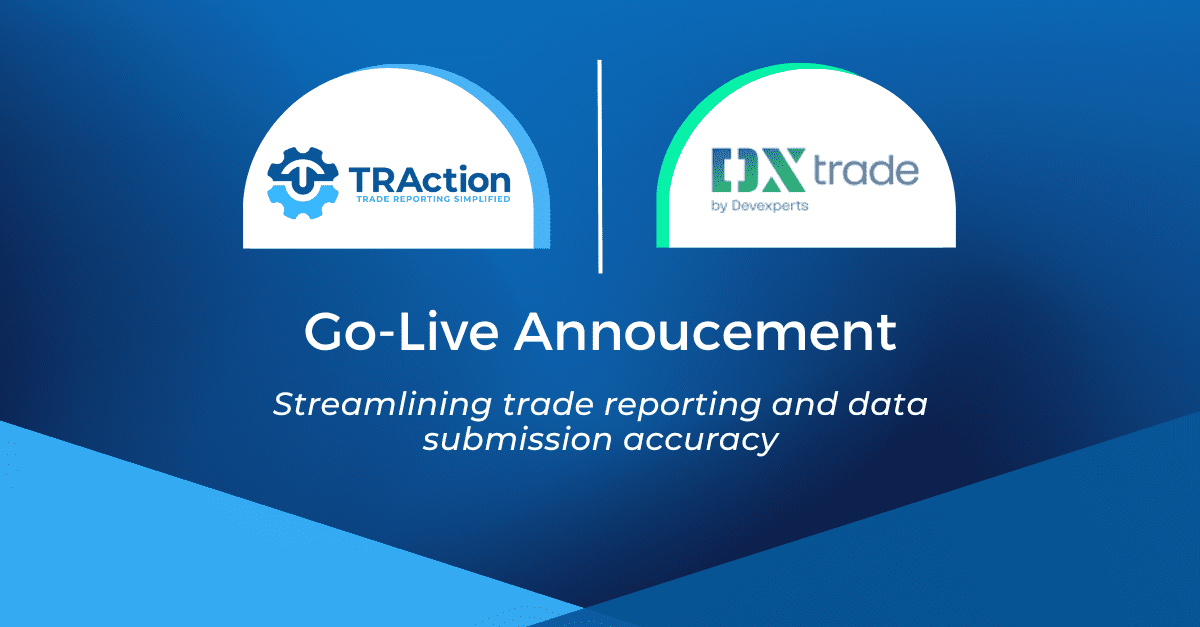The new EU EMIR Refit rules begin on 29 April 2024. This revision is meant to align EU EMIR with global standards and improve data quality, as such there have been major changes introduced.
There is a gap in implementation between EU and UK EMIR, where UK EMIR will commence a few months after EU EMIR on 30 September 2024.
Please refer to our separate article for details of the UK EMIR Reporting requirements and how they are changing in September 2024.
What are the major changes in the new EMIR Refit?
1. ISO20022 XML reporting
ISO 20022 is currently used for other regulatory reporting regimes and has been widely accepted in the financial industry. ESMA will introduce the harmonised XML submissions for EMIR reporting as part of the global standardisation. A fully standardised format for reporting aims to eliminate the risk of discrepancies in data.
2. Unique Product Identifier (UPI)
ESMA has specified in ITS Article 6 that derivatives which are admitted to trading or traded on a trading venue or a systematic internaliser should be using an International Securities Identification Number (ISIN) code. The remaining derivatives should be identified using a Unique Product Identifier (UPI) code.
The Derivatives Service Bureau (DSB) Ltd has been designated as the service provider for the future UPI system. DSB will be the sole issuer of UPI codes and operator of the UPI reference data library.
A UPI will be assigned to an over-the-counter (OTC) derivatives product and used for identifying the product in transaction reporting data. This will enable authorities to aggregate data on OTC derivatives transactions by product or by any UPI reference data element. Such aggregation will facilitate the effective use of OTC trade reporting data, including helping authorities assess systemic risk and detect market abuse.
3. Unique Transaction Identifier (UTI)
In order to align with international standards, ESMA is adopting standards promoted by CPMI-IOSCO for defining the logic structure of Unique Trade Identifiers (UTIs). The introduction of these changes will enhance data harmonisation globally.
The change to the UTI generation waterfall model considers bilateral agreements as fallbacks. In a situation where there is no agreement in place, firms follow the UTI waterfall for generation of this identifier. There is a deadline set by ESMA where the counterparty generating the UTI shall communicate the UTI to the other counterparty timely, which is by 10:00 a.m. UTC on T+1 (ITS Article 7)
4. Legal Entity Identifier (LEI)
Moving forward, the renewal of LEIs will be validated only for the reporting counterparty and the entity responsible for reporting. This means lapsed LEIs are allowed for other counterparties. (ITS Article 8)
5. Revised reporting lifecycle events
The Action Type field alone is insufficient to describe the business event, so ESMA has introduced Event Type to provide more granularity about the type of business event triggering a given report. Here is the combination of Action Types and Event Types:

6. Changes to reportable fields
There are 89 new fields being introduced in EMIR Refit, bringing the total number of fields to 203.
A new field introduced is the Derivative Based on Crypto-assets, where counterparties are expected to indicate whether a security is based on a crypto-asset. This will allow ESMA to assess the trading volumes and risk of crypto-tokens which in turn will facilitate the development of more granular requirements in the future.
Some existing fields have been removed, such as the Trading Capacity and Beneficiary ID fields which were found to provide little to no value.
Background
The technical standards were published in the European Commission’s Official Journal on 7 October 2022.
The European Commission adopted the EMIR Refit Final Report on RTS (regulatory technical standards) and ITS (implementing technical standards).




